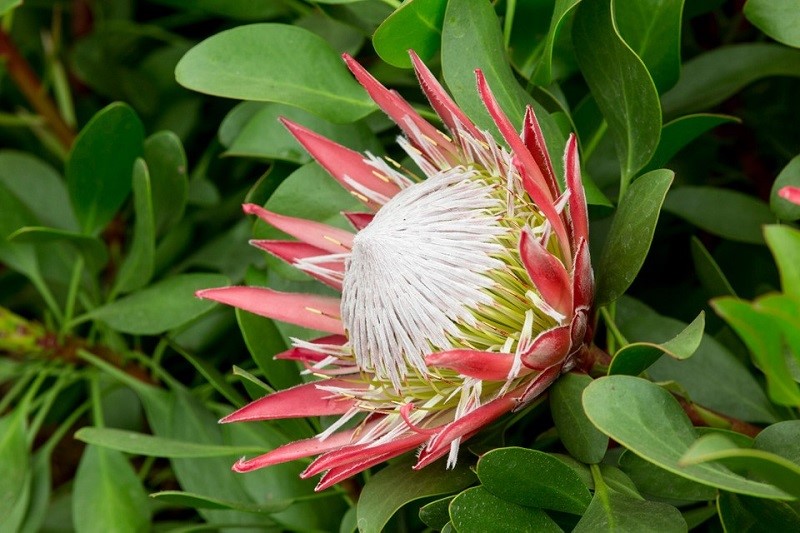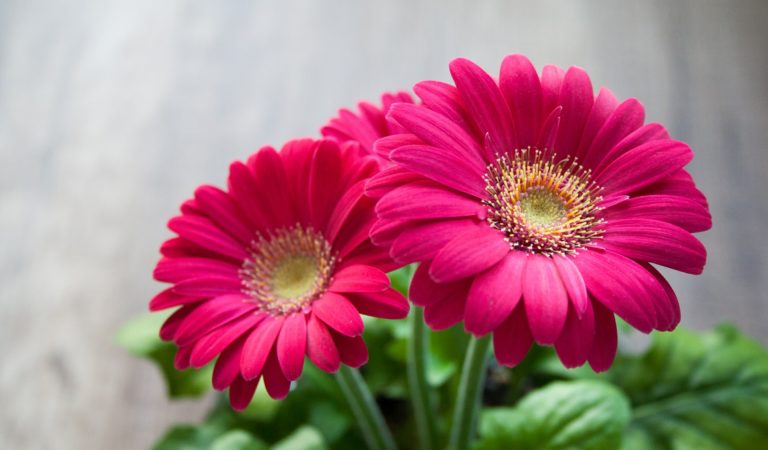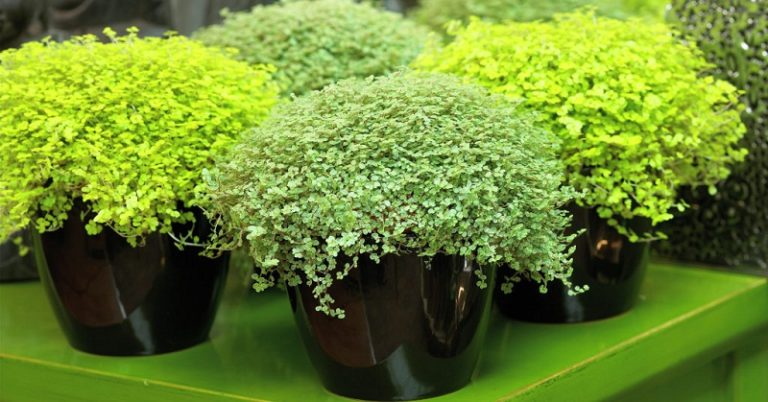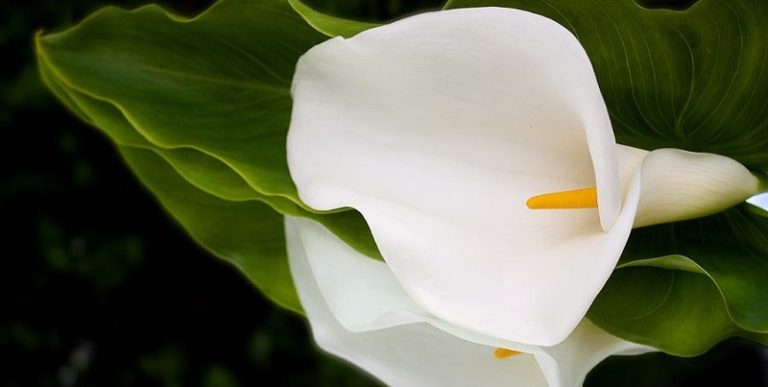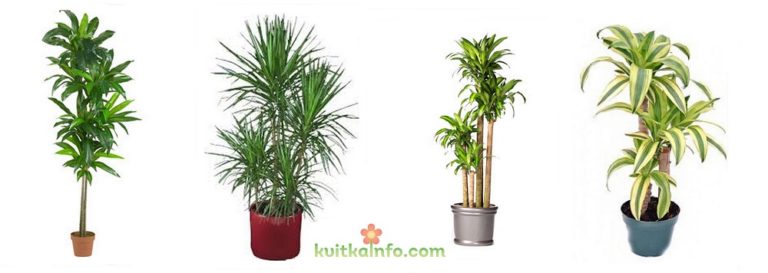Protea – care, cultivation
Proteas are not at all easy flowers to grow, but they are so beautiful that they will be in the center of any flower arrangement, and will also replenish the collection of the most original dried flowers.
In total, there are about 100 species in the genus Protea, common in southern Africa. The largest of them is the artichoke or royal protea (Protea cinaroides), chosen as the national symbol of South Africa. In our stores, protea is often called the “African rose”.
Protea is a succulentt from the Proteus family, which accumulates water with leaves and roots, as well as Protea flowers conquer flower growers all over the world with non-standard flowering. “Prickly”, daring-looking heads of inflorescences resemble either an artichoke, or giant thistles and burdocks, but in colorfulness and exoticism they will give odds to any other flower.
Protea is one of the most exotic and beautiful flowers to cut. Small trees and shrubs with stiff elongated-oval leaves. Numerous flowers are collected in large, up to 30 cm in diameter, capitate inflorescences, which are surrounded by a leaf wrapper. The leaves of the wrapper are painted in yellow, pink or pink-lilac tones, it is they, and not the flowers, that give the inflorescences a decorative look.
Amazing flowers are used to create original bouquets, including wedding bouquets. They are able to retain their freshness for up to twenty days, and in a dried state much longer.
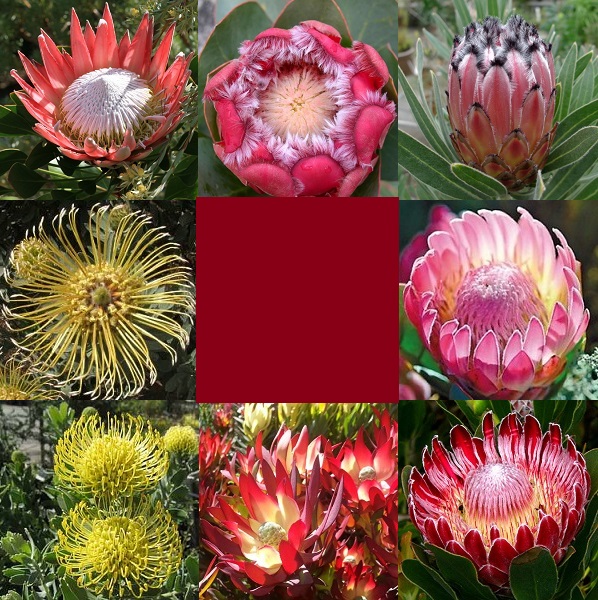
Protea – care
Protea is not at all easy to care for. With our tips, you will choose the right place for growing, temperature and watering, and this flower will grow with you without difficulty.
Place of cultivation of proteas
Protea likes to grow in a brightly lit place. But the color of the inflorescences, the brightness of tones are negatively affected by direct sunlight. Therefore, for Protea in a winter garden or room, you need to select bright but diffused locations. For the flowering of this exotic, the stability of lighting is critical: on cloudy days and in the cold season, it is recommended to illuminate the plant with special phytolamps (or fluorescent lamps)..
All parts of the flower are not poisonous. But for allergy sufferers during the flowering period, it is better not to keep the plant in the bedroom.
Temperature for Protea
The African flower loves warmth. It reacts significantly to sudden changes in microclimatic conditions, so it needs to be grown at consistently hot temperatures, which does not allow this plant to be grown outdoors even as an annual with a short growing season. In the warmer months (from late April to mid-autumn), proteas need to create a stable regime. The room temperature should be at least +20 degrees Celsius.
In autumn, you need to gradually lower the temperature in the room. In winter, the protea should be in cool conditions. The optimal temperature drop for rest is from +5 to +10 degrees Celsius. Otherwise, the plant will bloom again and lose its decorative effect. It is almost impossible to restore culture.
In addition to temperature, it is also necessary to provide the flower with access to fresh air. The plant does not develop well in stagnant air. Unlike most representatives of the flora, it is not afraid of drafts. The plant cannot be taken out into the fresh air in the middle lane (with the exception of a glazed balcony or loggia, a glazed patio).

How to water a protea. Air humidity.
Watering can be called the most difficult to care for Protea. This plant is extremely sensitive to waterlogging of the soil and does not respond well to too abundant watering. Watering for Protea should be moderate. It is better to carry out frequent but scanty watering than excessive moistening of the soil with moisture. But the drought resistance of protea, which it shows in the soil in regions with warm winters, is almost completely lost by the culture in room culture. Complete drying of the earthen coma for protea should not be allowed, only by allowing the soil to dry out in the upper layer and partially on average. The winter irrigation regime cannot be called anything other than scarce: Protea at the dormant stage is watered only 1 time per month.
You should also carefully approach the choice of water for irrigation. For protea, only soft and acidified water is suitable, to which a few drops of lemon juice or citric acid are added on the tip of a knife.
One of the best qualities of a capricious protea is a love of dry air. This plant does not need spraying (air humidity will not have a good effect on the attractiveness of the inflorescences). Moreover, Protea loves hot air and is not afraid to be placed next to heating appliances.
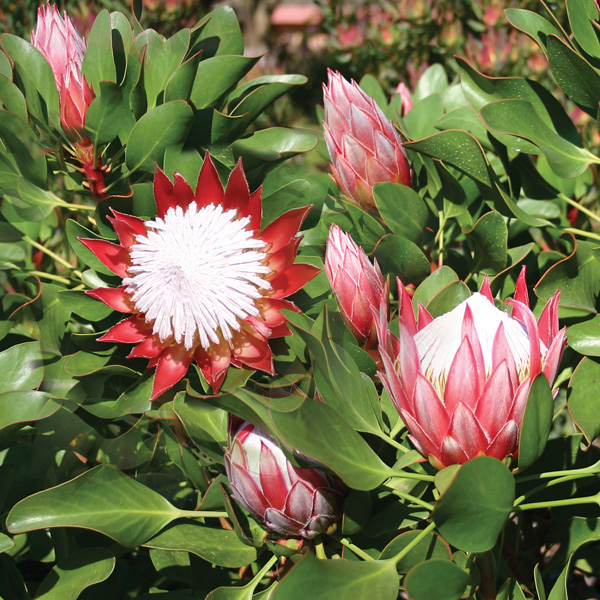
Protea pruning
After each flowering, the inflorescences are cut off, and the shoots are shortened by 5-10 cm. You also need to clean the plant from withered and dried leaves.
Protea soil, transplant
To grow protea, you will need an acidic substrate. The pH level should be between 5.0 and 5.5. A store-bought substrate designed for azaleas is ideal. At home, the mixture can be prepared from sand, peat, perlite, pine needles, heather soil. Changing the container and substrate should be carried out once every two years. In this case, the pot should be chosen one size larger than the previous one. On average, an adult plant needs a flowerpot with a diameter of 35 cm.
Top dressing of protea
In its natural environment, the plant develops well on poor soils. Therefore, frequent feeding is not needed. It is enough to periodically (2 times every 30 days) increase the acidity of the soil. It is undesirable to use drugs with fluoride. Nitrogen-containing fertilizers are very suitable. Also, experienced flower growers recommend fertilizers suitable for azaleas for protea. The concentration should be halved.
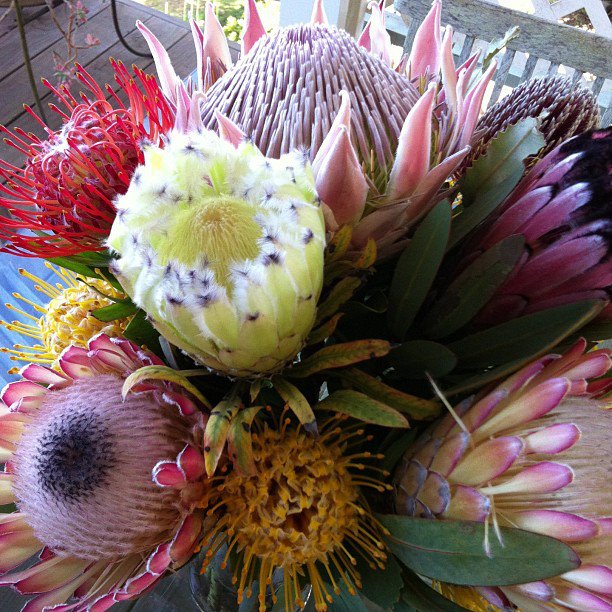
Protea in the open field
The increased sensitivity of the crop to ambient temperature does not allow growing protea in the open field, even as an annual with a short growing season.
Difficulties in growing protea
Protea is characterized by increased resistance to various pests and diseases. But failure to follow simple care recommendations can reduce the plant’s resistance to pests and diseases. As a result, aphids will appear on the flower or become infected with a black leg or late blight.
Yellow leaves – increased alkalinity of the environment. It is necessary to water the substrate with an acidified liquid

